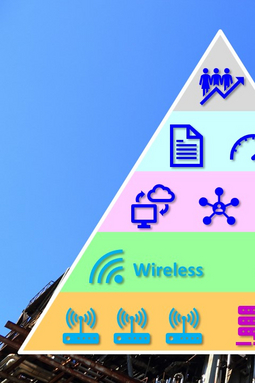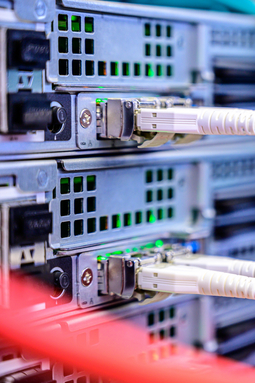Communication Networks for Automation and Industrial Applications
Research activities in this framework can be classified into three separate but interrelated areas. At the lower network layers, communication technologies are investigated, with a clear distinction between wired and wireless solutions, as huge differences in their behavior require specific approaches for requirement fulfillment. At the upper layers, instead, the most relevant aspect is interoperability, where unified architectures allowing to operate sets of heterogeneous subsystems as a whole (like the Industrial Internet of Things) are gaining momentum.

Dependable and Deterministic Wireless Networks
Besides providing designers with an unprecedented level of flexibility, the ability to cut ties in distributed control/sensing systems, by interconnecting devices through wireless networks, is demanded every time deploying cables is impossible, cumbersome, or just limiting.
Suitable techniques including, e.g., seamless redundancy, frequency hopping, coordinated/scheduled medium access, and clock synchronization, coupled with intelligent algorithms, have to be employed to grant the degree of dependability and determinism asked for by industrial applications, despite the erraticness of wireless media. In addition, low power consumption is often required as well.
Research activities carried out in this context aim at studying and evaluating emerging technologies, assessing their characteristics and limits, and proposing possible improvements. Currently, the focus is on solutions operating in unlicensed bands, e.g., IEEE 802.11 (Wi-Fi) and 802.15.4 (in particular, TSCH), to prevent users from being forced to pay for licence fees.
IIOT
Industry 4.0 is all about integration and interoperability of operation and information technologies for both systems and applications. To this purpose, the Industrial Internet of Things (IIoT) defines a novel, distributed architecture for industrial scenarios, which is the logical evolution of the traditional automation pyramid.
According to the IIoT paradigm, which relies on the most recent ICT advances, all interactions between actors take place by means of the Internet Protocol (IPv4 and IPv6) and related suite of higher-level protocols and network services. Besides communication and middleware, IIoT-enabling technologies include Cloud and Edge Computing, Big Data, Cyber-physical Systems (CPS), and Machine Learning (ML).
Research activities carried out in this framework aim at studying and experimenting a number of well-assessed solutions, such as OPC UA, MQTT, non-relational databases, as well as programming tools and integrated development environments specifically conceived for automation, from both qualitative (functional) and quantitative (performance) viewpoints.


Real Time Wired Networks
When utmost dependability and hard real-time are demanded, as in most control applications for industrial, embedded and automotive scenarios, wired networks are still the most viable solution. The shift towards full digital communications, which started in the 1980s with fieldbuses and continued in the 2000s with Industrial Ethernet, is now further evolving with the aim of achieving convergence among technologies.
Time-sensitive networking (TSN), which embeds functions like time synchronization, stream reservation and frame replication in standard Ethernet, is undoubtedly the main effort in this direction. The recent attempt to define an extension of the Controller Area Network (CAN) protocol (termed CAN XL) to enable transparent tunnelling of Ethernet is also noteworthy.
Research activities carried out in this framework ground on the vast knowledge CE&NG researchers have acquired over the past decades, and also foresee participation in relevant international standardization bodies such as CAN in Automation (CiA) and IEEE.
